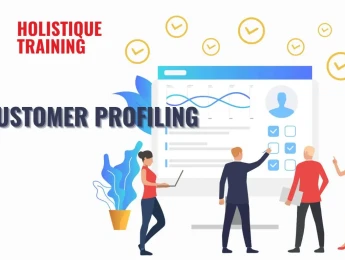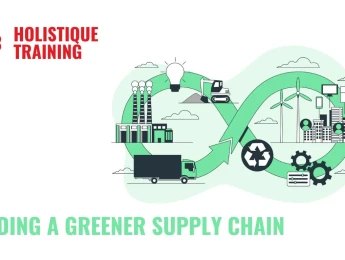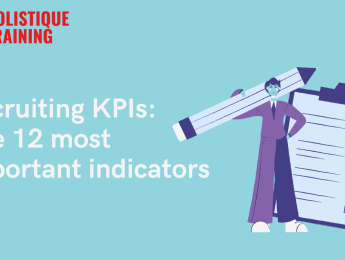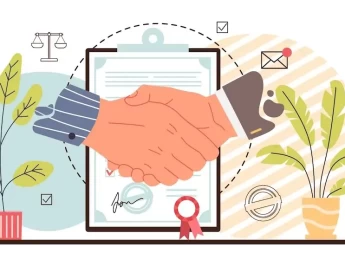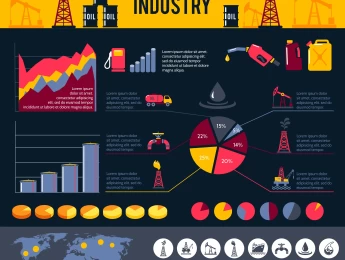- Table of Contents
- What Is Procurement?
- What Does KPI Mean?
- What Are the 11 Most Important Procurement KPIs?
- 1. Cost Savings
- 2. Supplier Performance
- 3. Lead Time
- 4. Purchase Order Accuracy
- 5. Spend Under Management
- 6. Contract Compliance
- 7. Supplier Diversity
- 8. Supplier Risk Management
- 9. Procurement Cycle Time
- 10. Maverick Spending
- 11. Savings as a Percentage of Spend
- The Importance of Procurement Metrics
- Strategic Alignment
- Performance Evaluation
- Continuous Improvement
- Risk Mitigation
- Cost Optimisation
- Supplier Relationship Enhancement
- Informed Decision-Making
- Benchmarking
- Legal and Compliance Assurance
- Transparency and Accountability
- Scalability and Growth
- Communication and Stakeholder Confidence
- How to Make Sure KPIs Are Met
- 1. Clear Goal Setting
- 2. Cross-Functional Collaboration
- 3. Supplier Relationship Management
- 4. Technology Adoption
- 5. Regular Monitoring and Reporting
- 6. Continuous Improvement Initiatives
- 7. Employee Training and Development
- The Role of Artificial Intelligence (AI) in Procurement
- Advanced Data Analytics
- Cost Savings Through Predictive Analytics
- Supplier Performance Prediction
- Enhanced Supplier Selection
- Demand Forecasting
- Automation of Routine Tasks
- Enhanced Supplier Negotiations
- Improved Compliance and Transparency
- Streamlined Procurement Processes
- Supplier Risk Assessment
- Customised Procurement Strategies
- In Conclusion
Introduction
In the dynamic and competitive landscape of modern business, efficient procurement practices are crucial for success. Procurement, often referred to as the process of sourcing and acquiring goods and services required by a company, plays a pivotal role in maintaining operational integrity and optimising costs. To navigate this intricate landscape, businesses rely on Key Performance Indicators (KPIs) to gauge their procurement effectiveness. In this comprehensive guide, we will delve into the world of procurement KPIs, exploring what they are, why they matter, and the 11 most important KPIs you can't afford to overlook.
What Is Procurement?
At its core, procurement is the strategic process of obtaining goods, services, or works that an organisation needs to operate. This includes everything from sourcing raw materials for manufacturing to acquiring office supplies. Procurement encompasses various stages such as supplier selection, negotiation, purchase, delivery, and ongoing vendor relationship management. Effective procurement contributes to cost reduction, quality improvement, risk mitigation, and overall operational excellence.
Table 1: Stages of Procurement
Stage | Description |
1. Need Identification | Determine goods/services required. |
2. Supplier Selection | Identify and evaluate potential suppliers. |
3. Request for Proposal (RFP) | Create a formal supplier proposal request. |
4. Negotiation & Contracting | Negotiate terms and finalise contracts. |
5. Purchase Order (PO) | Issue an official purchase order to the supplier. |
6. Receipt & Inspection | Receive and inspect delivered goods/services. |
7. Payment & Supplier Evaluation | Process payment and assess supplier performance. |
What Does KPI Mean?
As mentioned earlier, KPI stands for Key Performance Indicator, which is a measurable metric that helps organisations assess their progress towards specific goals or objectives. KPIs are essential tools that provide actionable insights into the efficiency and effectiveness of various business processes. In the realm of procurement, KPIs serve as quantifiable benchmarks to evaluate the performance of procurement activities and contribute to data-driven decision-making.
What Are the 11 Most Important Procurement KPIs?
Now that we understand the fundamental role of procurement and the significance of Key Performance Indicators (KPIs), let's dive deeper into each of the 11 most crucial procurement KPIs that can make or break your organisation's procurement efforts.
1. Cost Savings
Cost savings are the lifeblood of effective procurement. This KPI measures the difference between the planned costs and the actual costs of goods and services procured. It reflects the effectiveness of negotiations and vendor management in achieving favourable prices. Tracking cost savings is vital for maintaining healthy profit margins and optimising spending. Moreover, it provides valuable insights into the performance of your procurement team, helping you identify areas where cost-efficiency can be further enhanced.
2. Supplier Performance
Supplier performance is the backbone of a seamless supply chain. This KPI ensures that vendors meet agreed-upon quality, delivery, and service standards. On-time delivery, product quality, and responsiveness are key factors here. A supplier who consistently delivers high-quality products on time can significantly impact your overall operational efficiency. Monitoring this KPI helps maintain a reliable network of suppliers, ensuring your organisation's ability to meet customer demands without interruption.
3. Lead Time
Reducing lead time is like gaining a competitive edge in a race. Lead time refers to the time it takes from placing an order to receiving the goods. A shorter lead time enhances operational agility, reduces inventory holding costs, and allows for quicker response to market changes. It's a critical KPI for businesses aiming to streamline their supply chain, as it directly impacts your ability to react swiftly to shifts in customer demand and market trends.
4. Purchase Order Accuracy
Precision matters in procurement. This KPI assesses the accuracy of purchase orders in terms of quantity, specifications, and pricing. A high accuracy rate reduces errors and prevents costly disputes with suppliers. Ensuring that purchase orders are error-free is essential for maintaining smooth procurement processes, as inaccuracies can lead to delays, additional costs, and strained supplier relationships.
5. Spend Under Management
Visibility and control over spending are essential for effective procurement. This metric represents the percentage of total procurement spending that is managed through established procurement processes. It reflects the organisation's control over its procurement activities. The higher the percentage, the better the organisation can monitor and optimise its spending. Spend under management not only reduces rogue spending but also enables you to negotiate better terms with suppliers, resulting in cost savings.
6. Contract Compliance
Contracts are the foundation of business relationships. Contract compliance evaluates the extent to which purchases adhere to established contracts and agreements. Non-compliance can lead to missed savings opportunities and increased risk. Maintaining contract compliance is vital for both legal and financial reasons. This KPI ensures that your organisation reaps the full benefits of negotiated contracts while mitigating any potential legal disputes.
7. Supplier Diversity
Diversity drives innovation and resilience. Measuring the diversity of suppliers in terms of size, ownership, and location fosters a more inclusive procurement strategy, which can lead to innovation and improved supplier relationships. Diverse suppliers can provide unique perspectives and solutions that benefit your organisation. This KPI goes beyond cost considerations and contributes to long-term competitiveness and social responsibility.
8. Supplier Risk Management
Risk management is the shield that protects your supply chain. This KPI assesses the organisation's ability to identify, assess, and mitigate risks associated with suppliers. It ensures continuity of supply and minimises disruptions. Effective risk management safeguards your operations against unexpected challenges, such as supplier bankruptcies, geopolitical instability, or natural disasters.
9. Procurement Cycle Time
Time is money in procurement. Procurement cycle time measures the duration it takes to complete a procurement process, from requisition to order fulfilment. Reducing cycle time improves efficiency and minimises bottlenecks, enabling your organisation to respond more quickly to changing market conditions. This KPI is closely tied to customer satisfaction and can be a key differentiator in fast-paced industries.
10. Maverick Spending
Tightening the reins on spending is essential. Maverick spending refers to unauthorised or non-compliant purchases outside of established procurement processes. This metric helps identify areas where process adherence needs improvement. Curtailing maverick spending can lead to significant cost savings and ensure that all purchases align with organisational objectives.
11. Savings as a Percentage of Spend
Saving, scaled to spending. This KPI calculates the savings achieved through procurement activities as a percentage of the total procurement spend. It highlights the cost-cutting impact of procurement efforts. Demonstrating substantial savings as a percentage of spend underscores the value of your procurement team and showcases its ability to deliver quantifiable financial benefits to the organisation.
Table 2: Procurement KPIs
Each of these 11 procurement KPIs serves as a critical indicator of your procurement team's performance. By monitoring and optimising these metrics, your organisation can not only achieve cost savings but also enhance supplier relationships, reduce risks, and improve overall operational efficiency. These KPIs are the compass that guides your procurement strategy towards success, ensuring that your organisation remains competitive and agile in the ever-evolving business landscape.
The Importance of Procurement Metrics
In the world of modern business, where data-driven decision-making is the norm, procurement metrics serve as an indispensable compass guiding organisations toward informed decision-making and operational excellence. These metrics provide quantifiable insights into the effectiveness of procurement strategies, helping businesses identify areas for improvement, optimise costs, enhance supplier relationships, and reduce risks. Let's delve into the significance of procurement metrics and explore additional points to highlight their importance:
Strategic Alignment
Procurement metrics align your procurement goals with overall business objectives. They ensure that your procurement efforts are in sync with the strategic direction of your organisation. By measuring the right KPIs, you can be confident that your procurement strategies are contributing to the bigger picture and not operating in isolation.
Performance Evaluation
Metrics provide an objective means of evaluating the performance of your procurement team and processes. They offer a clear view of what's working well and what requires improvement. This data-driven approach allows for constructive feedback and empowers your team to make targeted enhancements.
Continuous Improvement
A culture of continuous improvement is essential for staying competitive. Procurement metrics highlight areas where processes can be optimised. By regularly reviewing and acting on these metrics, you create a dynamic environment where efficiency and effectiveness are continually enhanced.
Risk Mitigation
Procurement metrics play a pivotal role in risk management. They help identify vulnerabilities in your supply chain and supplier relationships. By monitoring metrics related to supplier performance and risk, you can proactively address issues before they escalate into costly disruptions.
Cost Optimisation
Cost control is at the heart of procurement, and metrics are the tools for achieving it. By tracking metrics like cost savings and spend under management, you can identify cost-saving opportunities, negotiate better terms with suppliers, and reduce unnecessary expenditures.
Supplier Relationship Enhancement
Metrics related to supplier performance and diversity can be leveraged to nurture strong, mutually beneficial relationships with your suppliers. This not only ensures a reliable supply chain but also encourages innovation and collaboration.
Informed Decision-Making
Data-driven decisions are more reliable and less prone to bias. Procurement metrics provide the necessary data to make informed choices, whether it's selecting suppliers, renegotiating contracts, or adjusting procurement strategies in response to market changes.
Benchmarking
Comparing your procurement metrics to industry benchmarks can reveal how your organisation stacks up against competitors. This competitive intelligence can be invaluable in setting realistic targets and identifying areas where you need to excel to gain a competitive advantage.
Legal and Compliance Assurance
Maintaining compliance with regulations and contractual obligations is non-negotiable in procurement. Metrics related to contract compliance and accuracy of purchase orders ensure that your organisation remains on the right side of the law and minimises legal risks.
Transparency and Accountability
Transparency is crucial in procurement, especially in larger organisations. Metrics make procurement activities transparent and hold individuals and teams accountable for their actions and decisions. This accountability fosters a culture of responsibility and ethical conduct.
Scalability and Growth
As your organisation grows, procurement metrics provide insights into how your procurement processes can scale efficiently. They help identify potential bottlenecks and inefficiencies that can be addressed to support growth without compromising on quality or cost-effectiveness.
Communication and Stakeholder Confidence
Procurement metrics provide a common language for communicating performance both within your organisation and with external stakeholders. When stakeholders have confidence in your procurement processes, it can lead to stronger partnerships and more favourable terms with suppliers.
In short, procurement metrics are the lighthouse in the often turbulent sea of procurement. They guide organisations towards cost-effective, efficient, and strategic procurement practices. By prioritising the collection, analysis, and action based on these metrics, businesses can not only weather the challenges of the ever-evolving business landscape but also thrive and remain competitive in their respective industries. Procurement metrics are not just numbers; they are the keys to unlocking procurement excellence and future success.
How to Make Sure KPIs Are Met
Meeting procurement KPIs requires a comprehensive approach that involves collaboration across various departments, integration of technology, and continuous improvement efforts. Here's how to ensure your organisation meets its procurement KPIs:
1. Clear Goal Setting
Establishing specific and measurable KPIs is the foundation of successful procurement. These goals should not only align with your organisation's procurement objectives but also be realistic and tailored to your unique needs and priorities. Moreover, ensure that these goals are communicated effectively to all relevant stakeholders, creating a shared understanding of what success looks like in the context of procurement.
2. Cross-Functional Collaboration
Fostering communication and collaboration between procurement, finance, operations, and other relevant departments is essential. This collaboration ensures that procurement processes are seamlessly integrated into the broader organisational framework. It also facilitates the sharing of insights and information that can impact procurement KPIs. Regular cross-functional meetings can help identify synergies and opportunities for alignment.
3. Supplier Relationship Management
Building strong relationships with suppliers is an ongoing effort. It involves trust-building, open communication, and consistent performance assessment. In addition to assessing supplier performance, consider involving key suppliers in collaborative efforts to improve processes and drive innovation. Establishing a Supplier Relationship Management (SRM) programme can formalise these efforts and create a structured approach to supplier engagement.
4. Technology Adoption
The adoption of procurement software and tools is instrumental in meeting KPIs. These technologies can automate routine tasks, provide real-time insights, and enable better decision-making. When implementing such tools, focus on selecting those that align with your specific KPIs. Regularly assess the effectiveness of your technology stack and be prepared to make adjustments to ensure it continues to support your goals.
5. Regular Monitoring and Reporting
Continuous monitoring of KPIs is essential for staying on track. Develop a robust reporting mechanism that generates regular reports, ideally in real-time, to keep your team informed about KPI progress. These reports should not only highlight performance but also provide insights into trends and outliers. Timely reporting allows for swift corrective actions when KPIs deviate from targets.
6. Continuous Improvement Initiatives
Regularly reviewing procurement processes and KPI performance is a hallmark of a high-performing procurement function. Identify bottlenecks and inefficiencies, and implement process improvements accordingly. Consider conducting post-project reviews to learn from past successes and challenges, applying these lessons to future procurement endeavours. Emphasise a culture of continuous improvement to keep your procurement practises sharp and competitive.
7. Employee Training and Development
Investing in training programmes is a strategic move to enhance the skills, knowledge, and awareness of your procurement team. Provide ongoing education on best practices, industry trends, and emerging technologies. Furthermore, recognise and reward excellence within your procurement team to motivate and retain top talent. A well-trained and motivated team is more likely to contribute to KPI achievement and overall procurement success.
In summary, meeting procurement KPIs is not a one-time endeavour; it requires ongoing commitment and a holistic approach. These strategies, when executed with diligence and adaptability, ensure that your organisation consistently meets its procurement KPIs. Remember that KPIs serve as a guidepost, and the journey toward procurement excellence involves continuous learning and adaptation to the evolving business landscape.
The Role of Artificial Intelligence (AI) in Procurement
Artificial Intelligence (AI) is revolutionising the procurement landscape, offering unprecedented opportunities for efficiency, accuracy, and strategic decision-making. However, according to Craft, a survey conducted in 2020 by Digital Procurement World revealed that a mere 6% of the participants were actively implementing AI in their efforts to digitise procurement processes. Meanwhile, an additional 21% indicated that they were at the initial stages of incorporating AI into their procurement strategies. So, it’s time we start realising the importance of leveraging AI in procurement. That being said, let's delve into its significance:
Advanced Data Analytics
AI excels at processing and analysing vast datasets with remarkable speed and accuracy. In procurement, this capability enables organisations to gain deeper insights into supplier performance, market trends, and purchasing patterns. By leveraging AI-powered data analytics, procurement professionals can make more informed decisions, identify cost-saving opportunities, and predict supplier behaviour, all of which directly impact procurement KPIs.
Cost Savings Through Predictive Analytics
One of the most compelling aspects of AI in procurement is its predictive analytics capabilities. AI algorithms can forecast price fluctuations, demand shifts, and potential supply chain disruptions. By anticipating these events, organisations can proactively adjust procurement strategies to secure better pricing, optimise inventory levels, and mitigate risks. This, in turn, contributes to significant cost savings, a vital KPI in procurement.
Supplier Performance Prediction
AI can assess historical supplier data, market dynamics, and external factors to predict supplier performance accurately. This predictive ability allows organisations to identify high-performing suppliers and potential risks within their supply chain. Procurement teams can use this information to optimise supplier relationships, negotiate favourable terms, and reduce the chances of disruptions, thereby enhancing supplier-related KPIs.
Enhanced Supplier Selection
AI-driven tools can streamline the supplier selection process by evaluating supplier capabilities, financial stability, and compliance history. These insights facilitate more informed decisions when onboarding new suppliers or assessing existing ones. Improved supplier selection contributes to better risk management and supplier diversity, two critical procurement KPIs.
Demand Forecasting
AI excels at demand forecasting, which is essential for efficient inventory management and procurement planning. Accurate demand forecasts reduce the risk of overstocking or understocking, leading to optimised inventory holding costs and improved supplier relationships. Lower lead times and enhanced responsiveness to market changes are additional benefits that positively affect KPIs like lead time and purchase order accuracy.
Automation of Routine Tasks
AI can automate routine procurement tasks such as purchase order generation, invoice processing, and spend analysis. This automation not only reduces manual effort but also minimises errors and accelerates processes. Enhanced accuracy and efficiency contribute to improved procurement cycle time and cost savings KPIs.
Enhanced Supplier Negotiations
AI-powered tools can analyse historical negotiation data, market benchmarks, and supplier-specific information to recommend negotiation strategies. This data-driven approach strengthens negotiation positions and increases the likelihood of achieving favourable prices and terms, aligning with cost savings KPIs.
Improved Compliance and Transparency
AI-driven procurement systems can enforce compliance with procurement policies and regulations. These systems can automatically flag non-compliant activities, reducing the risk of maverick spending and ensuring adherence to contract terms. Enhanced compliance positively impacts procurement KPIs related to contract compliance and savings as a percentage of spend.
Streamlined Procurement Processes
AI can optimise procurement workflows by identifying bottlenecks and inefficiencies. By automating repetitive tasks and streamlining processes, organisations can reduce procurement cycle times and minimise operational costs. Streamlined processes contribute to efficiency-related KPIs.
Supplier Risk Assessment
AI can continuously monitor supplier-related risks by analysing a range of data sources, including news, financial reports, and geopolitical factors. Early identification of potential risks allows organisations to take proactive measures to mitigate disruptions and ensure supply chain continuity, aligning with supplier risk management KPIs.
Customised Procurement Strategies
AI can tailor procurement strategies based on real-time market conditions and organisational goals. These strategies can adapt to changing circumstances, optimising procurement efforts for cost savings, supplier diversity, and other KPIs.
In Conclusion
Procurement KPIs play a critical role in enhancing efficiency, reducing costs, and optimising supply chain management. By carefully selecting and monitoring these metrics, organisations can drive data-driven decision-making, strengthen supplier relationships, and achieve their procurement goals. Remember that effective procurement is a journey of continuous improvement, and by prioritising these KPIs, you'll be well on your way to procurement excellence in the ever-evolving business landscape. Stay ahead of the curve by embracing emerging trends and technologies in procurement, and you'll position your organisation for long-term success.
If you're eager to take your procurement skills to the next level, consider exploring our comprehensive course on "Procurement Sector Category Management." This course is designed to equip you with the knowledge and tools to effectively manage categories within the procurement sector, enabling you to implement strategies that drive cost savings, supplier optimisation, and overall procurement success. Embrace the opportunity to elevate your expertise and make a significant impact in the world of procurement.











